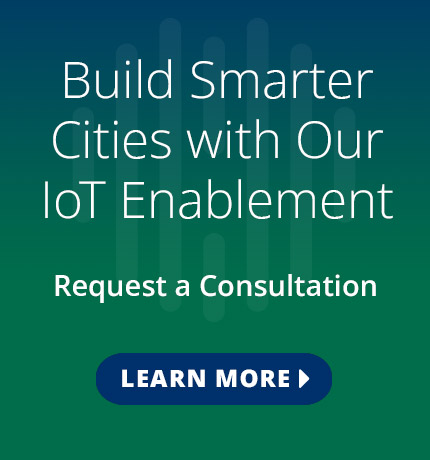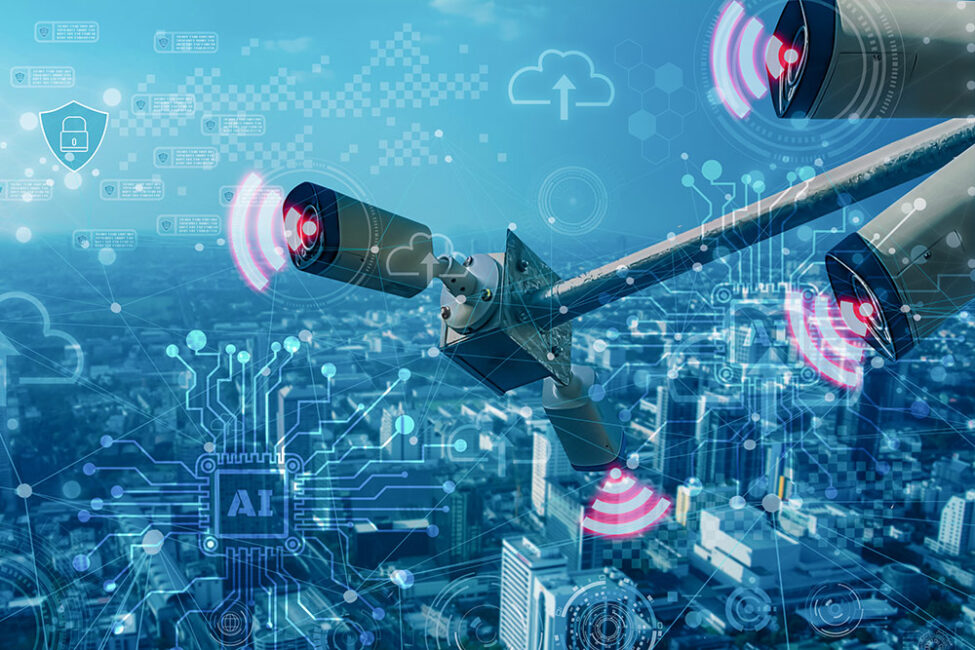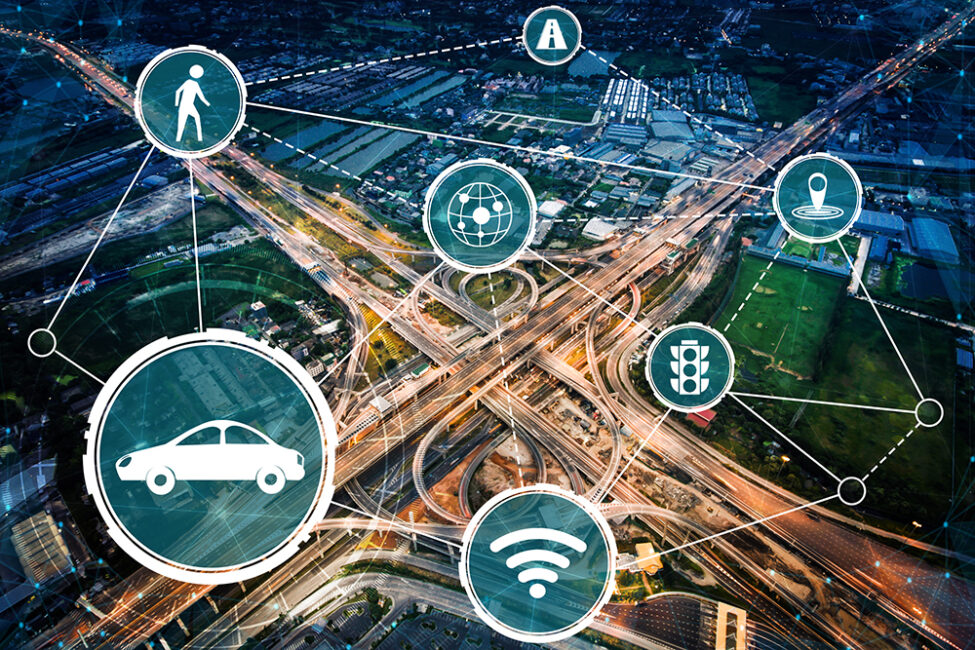
While often used in jest, the expression “modern problems require modern solutions” couldn’t be more accurate for public safety in large cities. Legacy siloed operational models and infrastructure systems aren’t sufficient for today’s public safety needs.
To create safer environments and improve the quality of life for their fellow citizens, innovative city leaders continue to turn to Internet of Things (IoT) solutions, such as:
- Cameras and sensors
- Artificial intelligence (AI)
- Connectivity services
Smart city applications and the technologies they leverage bring benefits that increase safety and can even save lives, including:
- Reduce crime incidents
- Boost emergency response times
- Decrease fatalities
Below are the ways IoT-enabled devices enhance smart city safety and security.
4 Smart City Public Safety IoT Solutions
1. Smart Security and Surveillance Systems

The first image that comes to mind when someone thinks of security is most likely a video surveillance system. These systems become more effective and intelligent when augmented with the latest technology.
Some of the key technologies smart cities deploy with their smart security systems include:
- Connected devices
- Video technology (e.g., internet protocol and cameras)
- AI and machine learning (ML)
- Analytics
- IoT-based alarm systems
- Wi-Fi or cellular connectivity
With these technologies, smart cities can achieve greater visibility and analysis of public places and facilities to prevent theft, destruction and false alarms.
2. Smart Traffic

Every year, car accidents account for 1.3 million deaths worldwide. However, roads can become safer with intelligent transportation systems (ITS). Smart traffic signals, for example, use AI and ML to capture data, identify accident-prone areas and adjust signals accordingly to enhance smart city safety.
In addition, these solutions can spot structural issues with bridges and roadways to prevent future disasters. Also, 5G’s high speed and ultralow latency provides traffic managers with real-time analysis. In an emergency, ITS can give first responders and law enforcement the right of way.
3. First Responders

Concerning first responders, their vehicles can use telemetry technology to provide drivers with the fastest route to avoid ongoing construction and congestion. These smart emergency vehicles can also capture and share data for training and later enhancement purposes.
Microphone and deep learning models can identify crime-related sounds like gunshots and glass breaking. Then they can triangulate the epicenter to accelerate response times from first responders. Moreover, 5G’s enhanced bandwidth and security will improve first responder equipment and technology, including body cams and communication devices.
4. Smart Street Lighting

Beyond becoming more energy-efficient and reducing costs, smart street lighting systems can make cities much safer. For example, a randomized controlled trial by Crime Lab New York found that public housing developments with new lights had significantly lower crime rates than those without.
Moreover, IoT smart street lighting systems are highly adjustable. They can be dimmed to help emergency responders or brightened to improve visibility on busy roads. Likewise, these smart city lighting solutions can detect outages to enable quick resolutions that deter sudden increases in crime.
Build a Safer, Smarter City with Telit Cinterion
Despite smart cities’ proven ability to improve public safety, they require millions of connected sensors and devices, which generate massive amounts of data. In addition, these IoT devices need always-on connectivity.
Whether you need IoT wireless adapter modules, connectivity services or an intuitive platform, we have secure IoT tools and services to enable your smart city public safety vision. We offer custom IoT solution services to build your ready-to-launch smart city IoT solution.
Speak with our smart city IoT experts today to learn more about our IoT-based public safety solutions.
Request a Consultation
